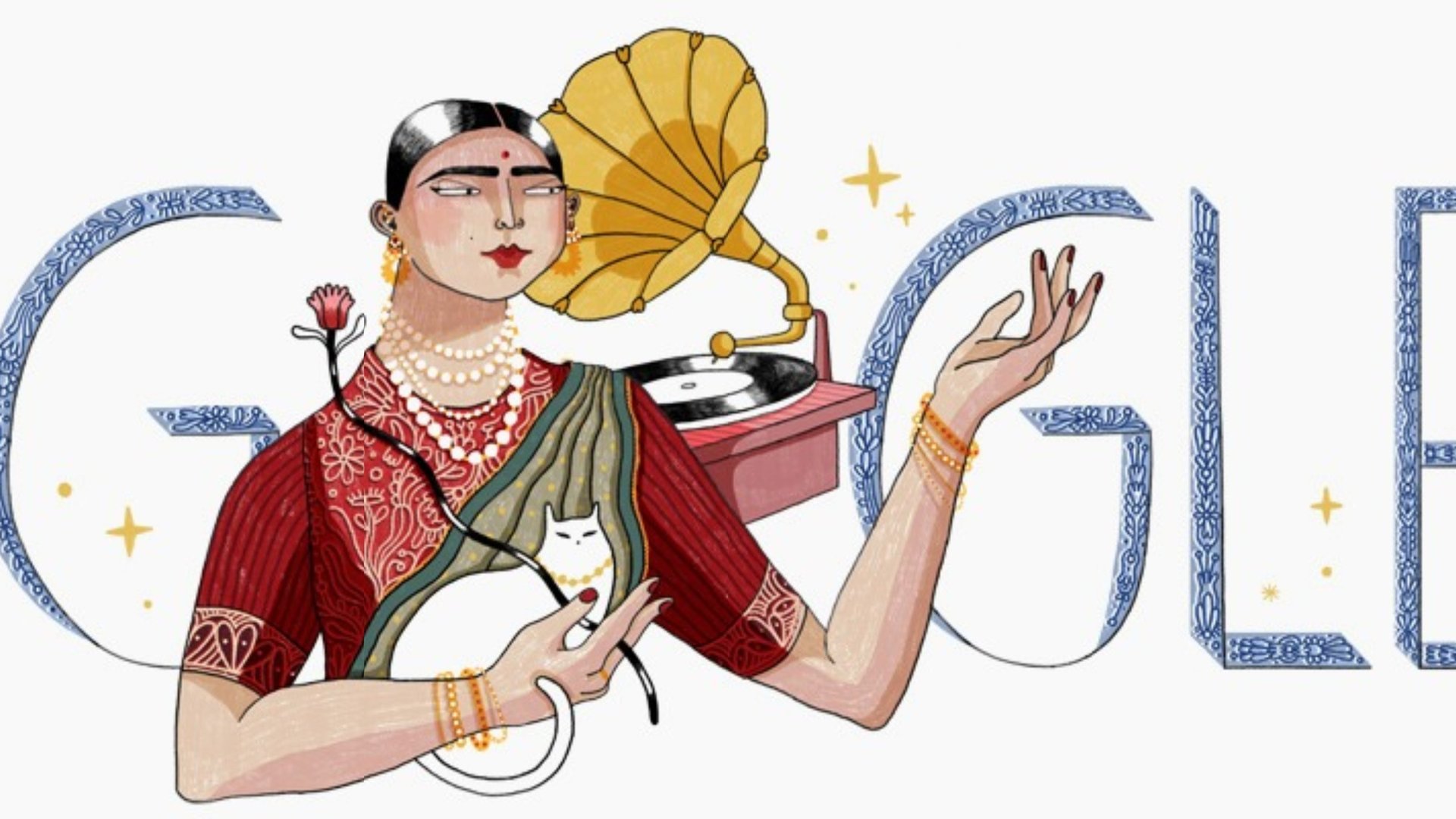Google doodle is celebrating India’s first recording artiste
Google is celebrating the 145th birthday of one of the first Indian singers to record on vinyl.


Google is celebrating the 145th birthday of one of the first Indian singers to record on vinyl.
Gauhar Jaan got her first recording done on Nov. 11, 1902, in a converted hotel room in Calcutta, now Kolkata. She earned the distinction after she was chosen for the task by Frederick William Gaisberg, the first recording engineer of the famous Gramaphone Company—now better known as Saregama India.
She went on to record over 600 songs in multiple languages from Bengali and Gujarati to Persian and French, her voice immortalised on 78 RPM (revolutions per minute) records.
Gauhar Jaan was born Eileen Angelina Yeoward on June 26, 1873, in Azamgarh, Uttar Pradesh, then part of the United Provinces. The child of an Armenian father and an Indian mother, her parents divorced when she was six years old. Following the split, Gauhar Jaan moved to Benaras (now Varanasi) with her mother and a Muslim nobleman. The mother-daughter duo then converted to Islam.
Some years later, they moved to Calcutta where Gauhar Jaan began training as a Hindustani classical musician. Soon, she also became accomplished in Kirtan and Rabindra Sangeet, among other musical forms.
At 14, Gauhar Jaan performed for the first time at the court of the Maharaja of Darbhanga in Bihar in 1887. He was so impressed by her voice that he appointed her the court singer. Over the next decade, she would become something of a celebrity, touring various Indian cities to perform, as well as featuring on matchboxes and postcards.
Owing to her growing popularity, she soon appeared on Gaisberg’s radar. The recording engineer had been an assistant to German-American inventor Emile Berliner, also known as the “father of the flat disc.“
Author Vikram Sampath’s book, My Name is Gauhar Jaan!, describes the artist’s day in the studio:
“While the accompanists tuned their sarangi, tabla and harmonium, a self assured Gauhar sauntered around the room and investigated the strange device with a huge horn that was fitted on the wall. Amused by the contraption, Gauhar asked the recording expert, ‘Am I to sing into this, Mr Gaisberg?’ ‘Yes madam’ was Gaisberg’s brief reply. He was busy fixing the recording equipment. At the narrow end of that long horn a diaphragm fitted with a needle was connected to the recording machinery which consisted of a needle placed on a thick wax master on a rotating turntable. Finally, when it was all in place, Gaisberg walked up to Gauhar Jaan and said ‘We are done. Are you ready too?’ She smiled, nodded and walked up to the horn.
[…]
A feature of most of the recordings of that early era was the musician screaming her or his name at the end of each recording. Gauhar had to do it too. This announcement was necessary since the wax masters were sent to Hanover for pressing the records and the technicians there would be at a loss to identify the musicians before making the labels. So they would listen attentively to these ‘signature’ announcements at the end of the three minute performance and label the record. Gauhar’s thin, child-like and playful announcement of her name, ‘My name is Gauhar Jaan’ in fluent English pierces through all these early recordings. It reflects the great mirth and enjoyment she possibly experienced during the entire tiresome process.”
In the late 1920s, Gauhar Jaan moved to the southern Indian city of Mysore (now Mysuru) to become the palace musician for its king, Krishna Raja Wadiyar IV. She died at the age of 56 on Jan. 17, 1930 after a long and legendary career.